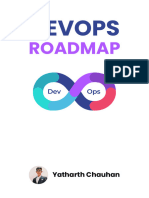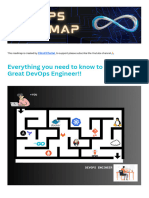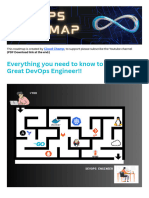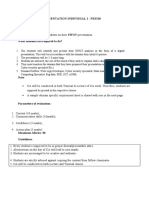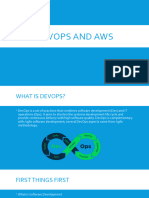Chapter 1: Artificial Intelligence, Machine Learning & Deep
Learning
What is Artificial Intelligence (AI)? AI is the simulation of human intelligence in machines that can
perform tasks like reasoning, learning, and decision-making.
Types of AI Narrow AI does specific tasks, General AI mimics full human intelligence, and Super AI
surpasses human intelligence.
Applications of AI Used in chatbots, automation, recommendation systems, fraud detection, and
smart assistants.
Machine Learning (ML) ML is a subset of AI where machines learn from data using supervised,
unsupervised, or reinforcement learning.
Deep Learning (DL) A branch of ML that uses layered neural networks to model complex patterns,
often for vision, speech, and language tasks.
Common Frameworks Popular ML/DL tools include TensorFlow, PyTorch, Keras, and Scikit-learn.
Recruiter’s Role in AI Hiring Understand project requirements and tech stacks to identify suitable
AI/ML professionals for roles like Data Scientist or AI Engineer.
■ Chapter 2: Cloud Computing
What is Cloud Computing? Delivering computing services (servers, storage, databases, etc.) over
the internet, replacing local infrastructure.
Benefits of Cloud Scalability, cost efficiency, flexibility, disaster recovery, and global access.
Types of Cloud Services
IaaS (e.g., AWS EC2): Infrastructure
PaaS (e.g., Heroku): Platform
SaaS (e.g., Gmail): Software
FaaS (e.g., AWS Lambda): Serverless execution
Deployment Models Public, Private, Hybrid, and Multi-cloud approaches for hosting cloud services.
Major Providers AWS, Microsoft Azure, Google Cloud Platform dominate the market.
Key Roles in Cloud Includes Cloud Engineer, Cloud Architect, DevOps Engineer with skills in
deployment, automation, and cloud design.
■ Chapter 3: DevOps
What is DevOps? A culture and methodology combining Development and Operations to enable
continuous delivery with automation.
Why DevOps Matters Reduces time-to-market, improves collaboration, and automates
testing/deployment.
DevOps Lifecycle/Phases Plan → Develop → Build → Test → Release → Deploy → Operate →
Monitor.
Popular DevOps Tools Jenkins (CI/CD), Docker (Containers), Kubernetes (Orchestration),
Terraform (IaC), Prometheus (Monitoring), SonarQube (Security).
Roles in DevOps DevOps Engineer, Site Reliability Engineer (SRE), DevSecOps Engineer—each
focuses on automation, performance, and security.
DevSecOps Integrates security at every stage of DevOps to ensure safe delivery pipelines.
�■ Chapter 4: Data Structures & Algorithms (DSA)
What are Data Structures? Ways to organize and store data for efficient access and
modification—examples: Arrays, Linked Lists, Trees, Graphs.
Types of Data Structures Linear (Arrays, Queues, Stacks) and Non-linear (Trees, Graphs).
What are Algorithms? Step-by-step procedures to solve problems—examples: Searching, Sorting,
Recursion, Dynamic Programming.
Why DSA is Important Foundational for coding interviews and system design; helps in writing
optimized code.
Common Problems Asked in Interviews Includes pattern-based questions, arrays, strings, and
recursive solutions like factorial or Fibonacci.
■ Chapter 5: Software Development Life Cycle (SDLC)
What is SDLC? A structured approach to developing software through phases: planning, analysis,
design, development, testing, deployment, maintenance.
Phases of SDLC Each phase ensures the product is well-planned, error-free, and meets user
needs.
Popular SDLC Models
Waterfall: Sequential, rigid.
Agile: Iterative, flexible—preferred in modern IT.
Agile Methodology Encourages collaboration, regular feedback, and adaptive planning; widely used
in DevOps environments.
System Design in SDLC Involves high-level architectural planning, including scalability, availability,
and modularity.
■ Chapter 12: Programming Languages & Frameworks
Importance of Programming Languages Languages like Java, Python, C++, and JavaScript help
develop applications across domains.
Frontend Frameworks React.js, Angular, and Vue.js are used to build interactive user interfaces.
Backend Frameworks Node.js, Spring Boot, Django, etc., handle server-side logic and databases.
Mobile App Development Uses languages like Java/Kotlin (Android) and Swift (iOS), often with
frameworks like Flutter and React Native.
Full Stack Development Combines frontend and backend—MERN and MEAN stacks are popular
full-stack combos.
Framework Benefits Save development time, ensure code consistency, and provide tools/libraries
for rapid deployment.
Roles Based on these Chapter :-
■ 1. AI Engineer
Role: Designs and builds AI models to solve complex business problems. Skills: Python, ML/DL
frameworks (TensorFlow, PyTorch), NLP, model deployment, data analysis.
■ 2. Machine Learning Engineer
Role: Develops machine learning algorithms and data pipelines. Skills: ML algorithms, statistics,
data preprocessing, model tuning, Python, Spark, H2O.
■ 3. Deep Learning Engineer
Role: Builds and trains deep neural networks for tasks like NLP and computer vision. Skills: CNNs,
RNNs, Keras, TensorFlow, data engineering, cloud deployment.
�■ 4. Cloud Engineer
Role: Designs and maintains cloud infrastructure on AWS, Azure, or GCP. Skills: Virtualization,
networking, containerization (Docker), scripting (Python/Shell), security.
■ 5. Cloud Solutions Architect
Role: Plans and implements scalable cloud solutions tailored to business needs. Skills: Architecture
design, cloud strategy, migration planning, cost optimization, cloud security.
■ 6. DevOps Engineer
Role: Automates development pipelines, deployment, and monitoring processes. Skills: CI/CD
(Jenkins), IaC (Terraform), Docker, Kubernetes, Git, scripting, Linux.
■ 7. Site Reliability Engineer (SRE)
Role: Ensures high availability, reliability, and performance of systems. Skills: Monitoring
(Prometheus), automation, incident response, load balancing, scalability.
■ 8. DevOps Solution Architect
Role: Designs end-to-end DevOps solutions and infrastructure automation. Skills: CI/CD design,
cloud platforms, IaC, DevSecOps, system architecture.
■ 9. DevSecOps Engineer
Role: Integrates security into every phase of the DevOps pipeline. Skills: Threat modeling, secure
coding, vulnerability scanning (SonarQube), compliance tools.
■ 10. Data Engineer
Role: Builds and manages large-scale data pipelines and architecture. Skills: SQL, ETL, Hadoop,
Spark, cloud storage, data modeling, APIs.
■ 11. Software Developer
Role: Writes, tests, and maintains code for applications. Skills: Programming languages (Java,
Python, etc.), SDLC, version control, debugging.
■ 12. UI/UX Designer
Role: Designs user-friendly interfaces and enhances user experience. Skills: Figma, Adobe XD,
wireframing, user research, accessibility standards.
■ 13. Database Administrator (DBA)
Role: Manages and secures enterprise databases. Skills: SQL, backup & recovery, performance
tuning, access controls, DB security.
■ 14. Database Developer
Role: Creates efficient and optimized database structures and queries. Skills: SQL, stored
procedures, triggers, data modeling, relational DBMS like MySQL/PostgreSQL.
■ 15. Backend Developer
Role: Builds server-side logic and APIs. Skills: Java, Python, Node.js, REST APIs, security,
scalability, databases.
■ 16. Frontend Developer
Role: Creates user-facing parts of web apps. Skills: HTML, CSS, JavaScript, React, Angular,
responsive design, browser debugging.
■ 17. Full Stack Developer
Role: Works on both frontend and backend systems. Skills: MERN/MEAN stack, REST APIs, Git,
databases, deployment, version control.









